Fileting Watermelon
By Steve Rose (copyright 1965-2002, rights reserved)
Thursday, October 24, 2002
Hydropeeling: Hydropeeling an Orange
Darryl Whaley, Locomotive Engineer: SLO, CA
Most folks conceive of the seeds of a watermelon being randomly distributed in the area surrounding the heart. However, this is not the case. They grow in a very specific pattern, and once you understand that pattern and apply a couple of simple techniques, it is almost as easy to remove the seeds from watermelon as to just cut it up.
The procedure starts by cutting the watermelon in half in cross section.

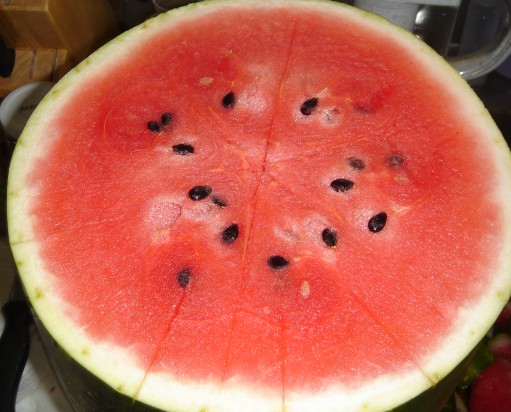
Notice that there are six "spokes" radiating from the heart to the outer perimeter. The spokes are the paths for the veins connecting each seed There are no seeds in these spokes. To help you visulaize, the melon on the right has long lines drawn with a knife to indicate the spokes, and short lines showing the position and extent of the cuts. The cuts, which continue straight down to a point of intersection, form a wedge when the rest of the process is applied.
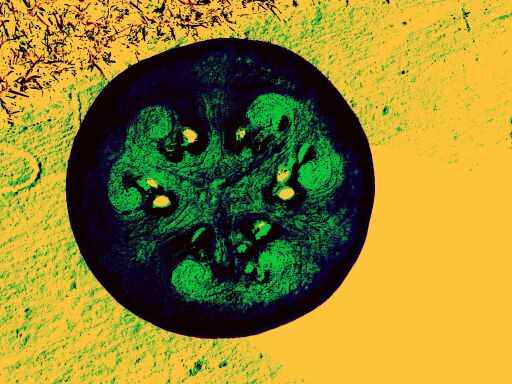
The seeds all grow in a crescent shaped area between the spokes, with the edges of the crescent pointing toward the outside of the melon.
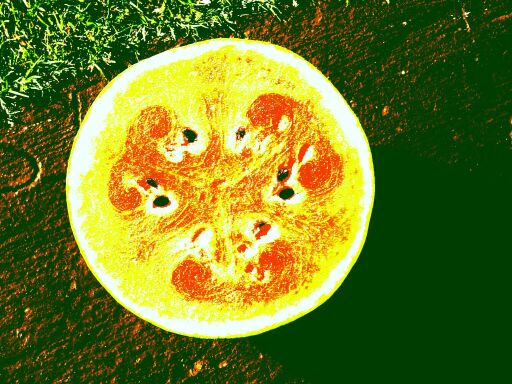
Cut through the rind, just up to the seed line on each wedge defined by the spokes, and continue the cut all the way down to the rounded bottom of the watermelon where the cuts will converge. It then becomes possible to push with one's thumb just at the edge of the heart, and the heel of the palm on the rind, and have the flesh fracture at its weakest point -- where all of the hollows surrounding the seeds are! It is as though the watermelon is perforated. The wedge comes sliding out, covered with seeds, that can easily be scraped off with a fork (with very little waste). The same can be done to remove the seeds from the inside of the melon where the wedge was just removed. As you can see from the false color picture above, the structure supporting the seeds wraps around on the side near the rind, sometimes causing seeds to form in more of an e pattern than a c. In this case, it is necessary to make an extra cut and break in each wedge. Normally, though, just "candle" the wedge (hold it up to the light to make sure that you got all the seeds), cut the flesh from the rind, and you are done. Repeat the process eleven times, and you have fileted the whole watermelon in minutes! If you do it very carefully, the core can be used for a table decoration before being eaten:
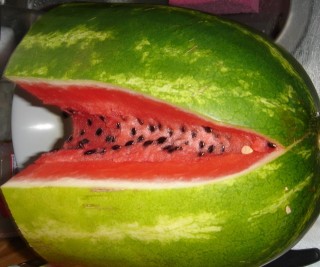
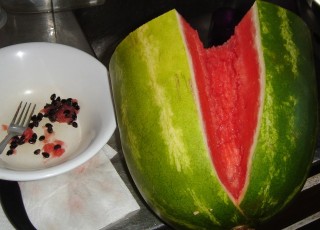
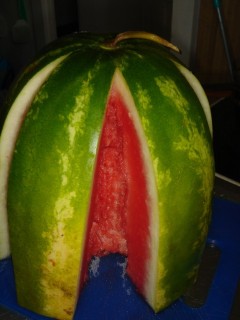
Seeds left after wedge is removed. Body of watermelon after seed removel (note very little waste) End result on body of watermelon.
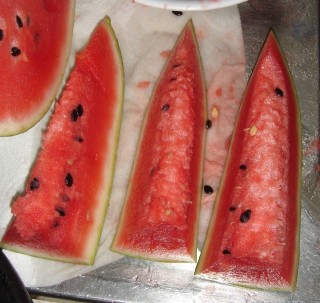
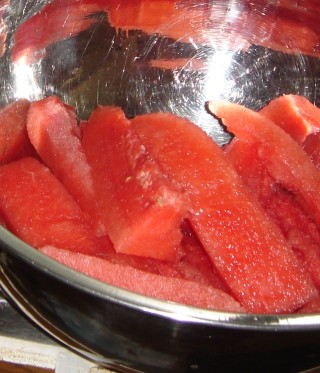
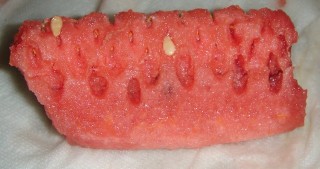
Wedges before seed removal Wedges and spokes deseeded and removed from rind Seed pockets form a weakend plane.
Have fun -- the whole watermelon is now heart, and you have a bowl of pure seeds for rapid fire seed spitting contests. If you don't yet understand these instructions, I'm available for consulting. All of my clients are now familiar with the procedure, and AgileTV has broadcast it internationally (on a videoconference with their folks in Australia, who said after the demo, "You know Steve, we have seedless watermelon here!").
$40,000 of Biology education, and all he can figure out is how to filet watermelon!